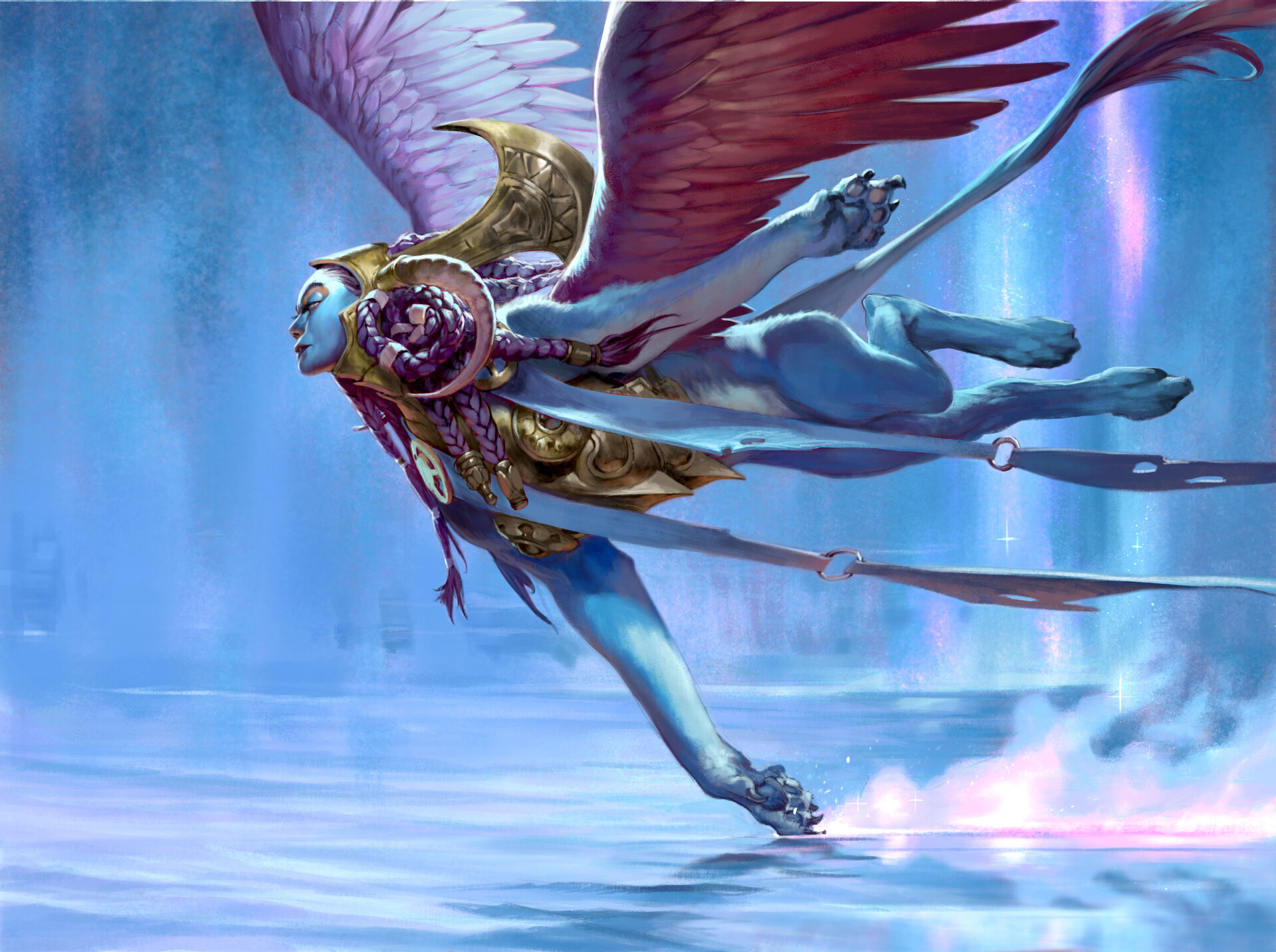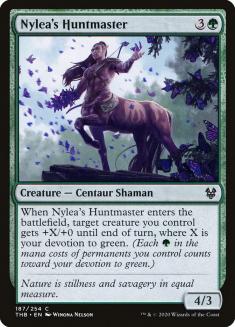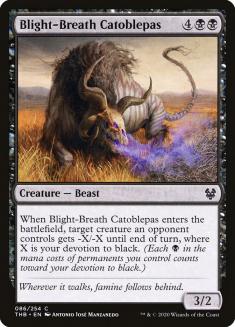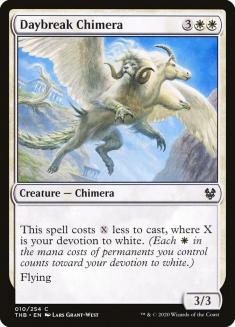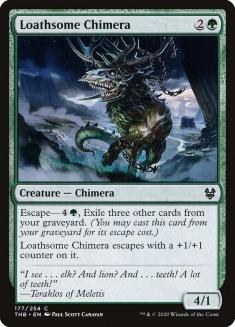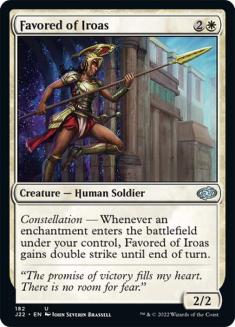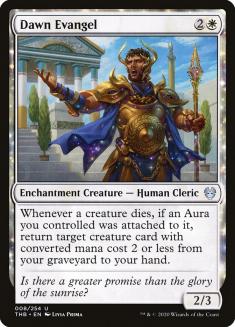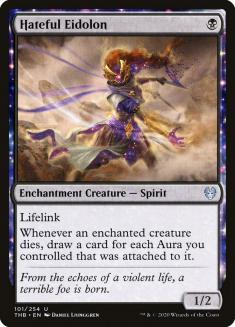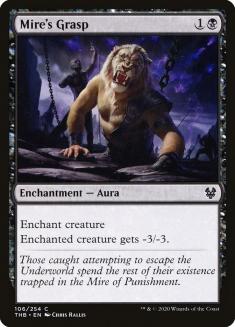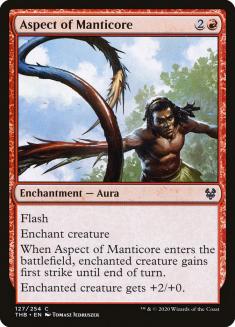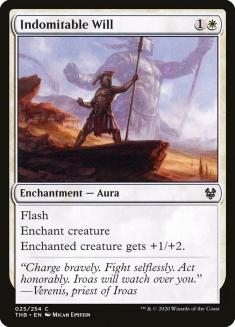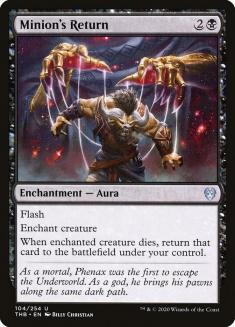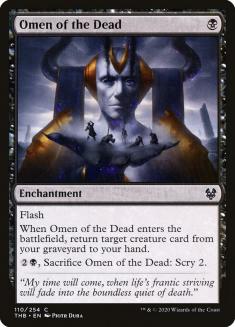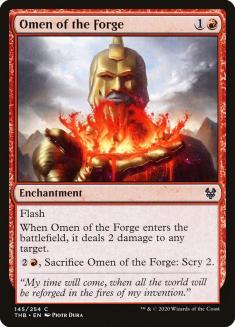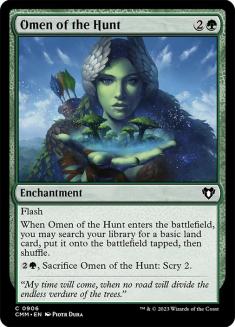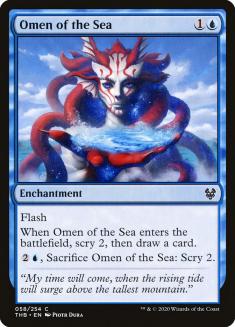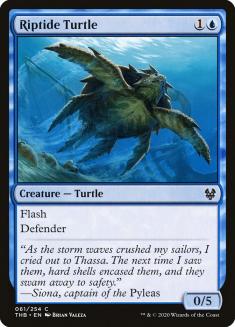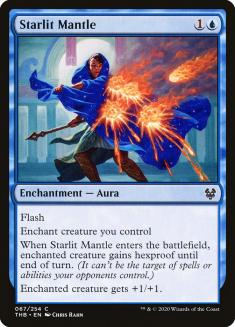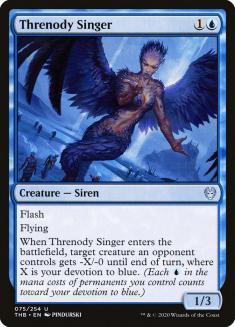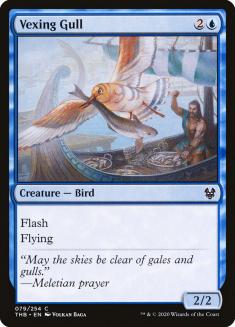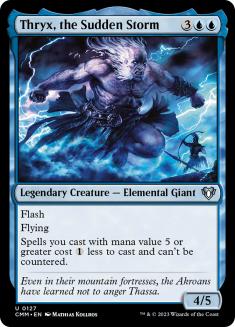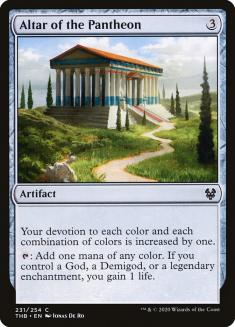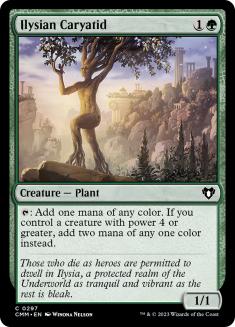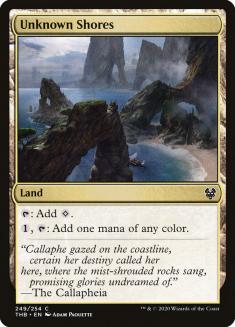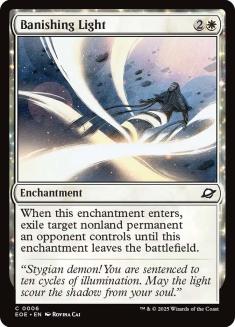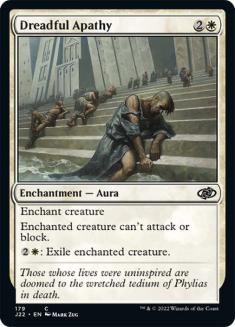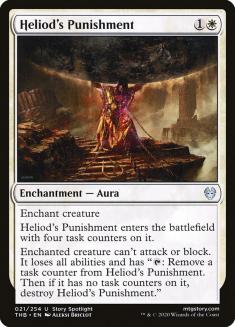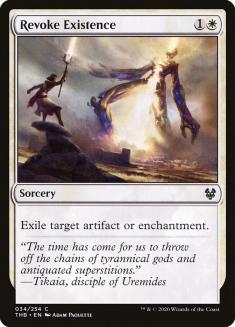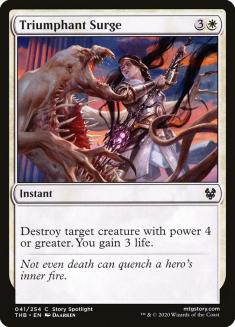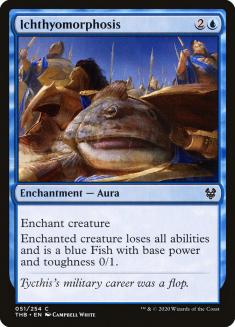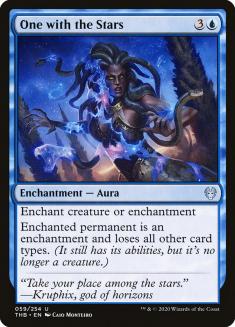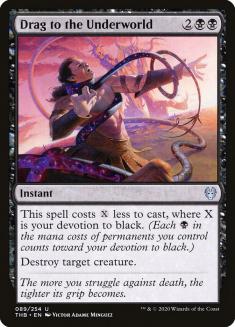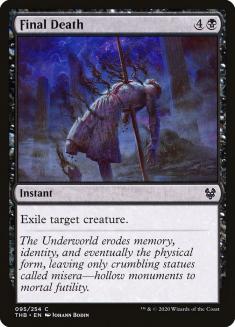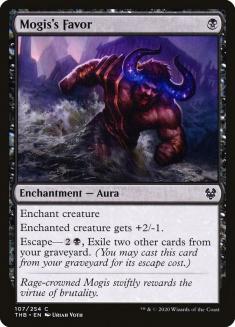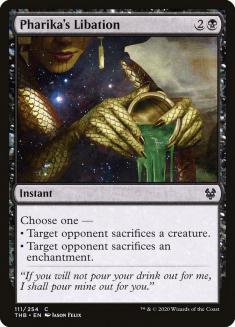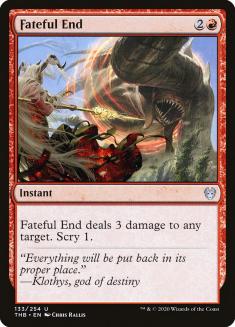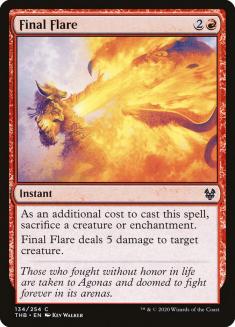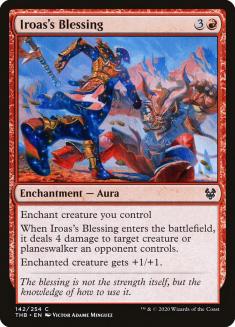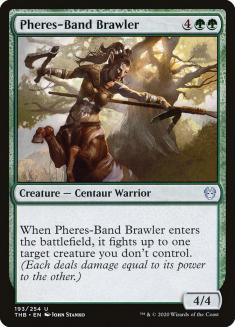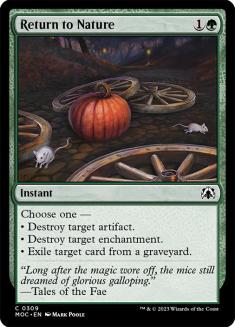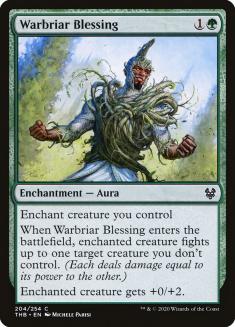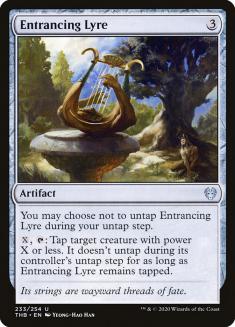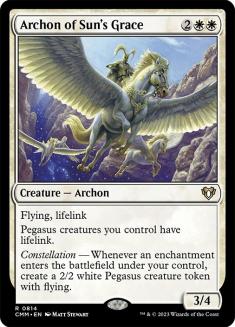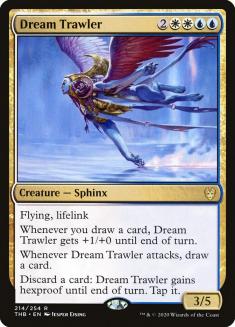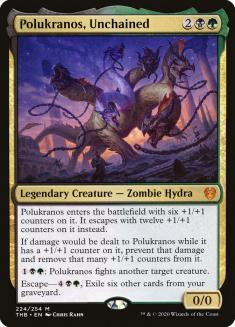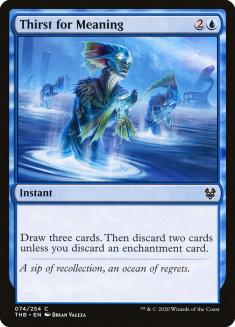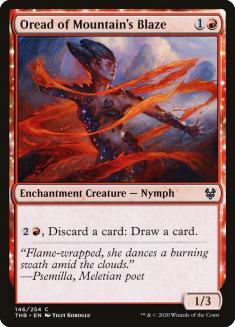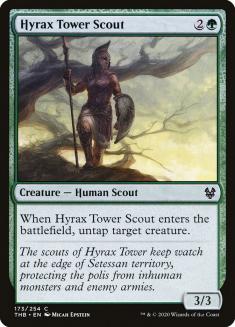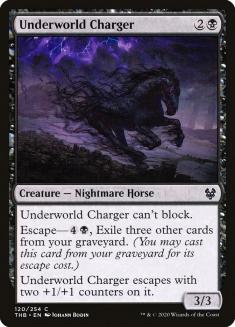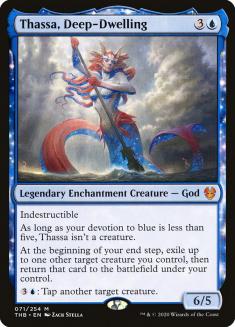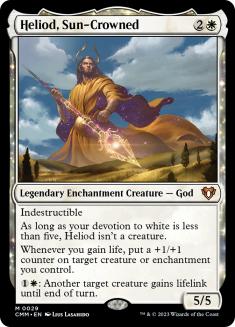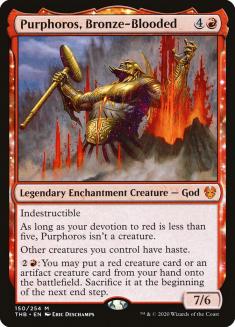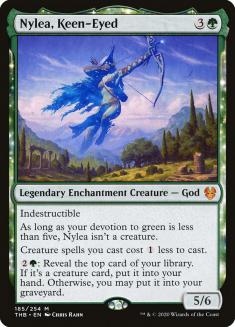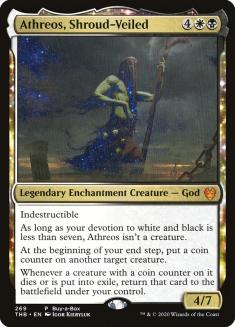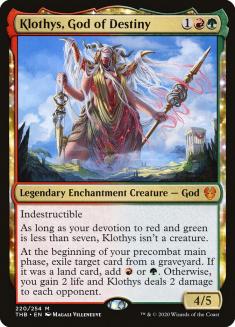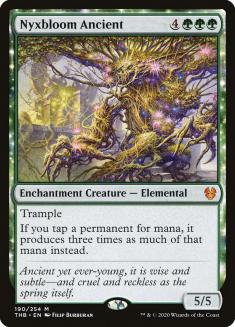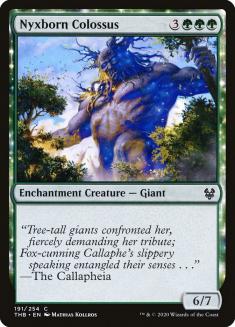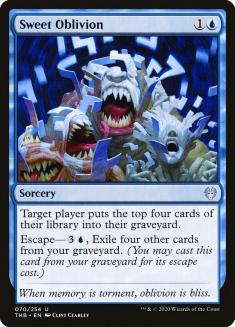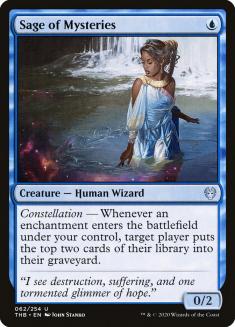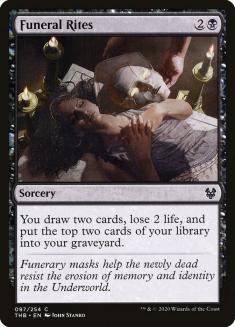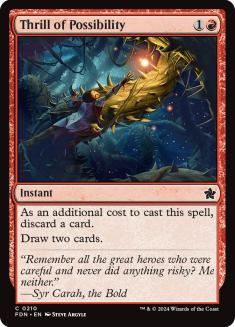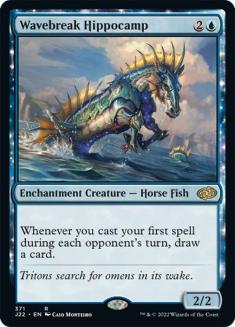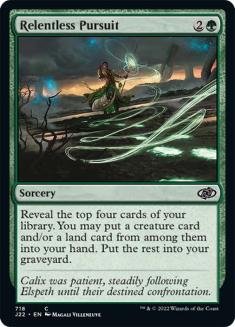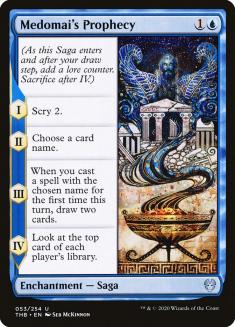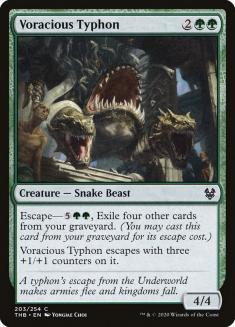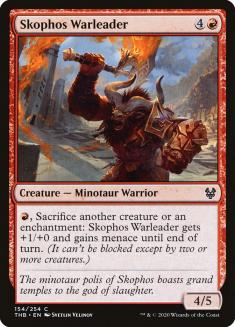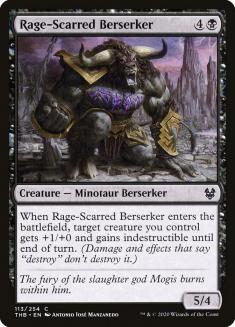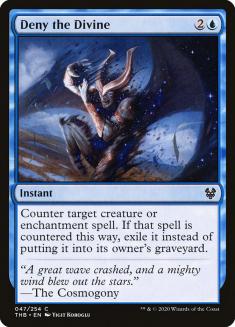Theros Beyond Death is shaping up to be a very interesting set, and today I welcome you to my Prerelease Primer. The goal of this article is to explain the set in detail and to prepare you for your Prerelease this weekend so that you don’t go in completely blind, which means it’s going to be focused on Sealed Deck (though a lot of it applies to Draft as well, of course).
When we talk about Sealed, it’s important to know that things change a lot depending on what you have. In Draft, I could tell you “green is the best color” and then you’d either force green or prioritize green cards above others, but in Sealed knowing that green is the best color isn’t actually helpful, because you have no choice over which cards you open; it only matters which color is best for your actual Sealed deck. Because of this, we’re going to focus on general aspects of the format: which mechanics are worse or better than they appear, how the removal matches up against the threats, how likely is it that it’s worth splashing, how fast the format is, and so on. Hopefully these concepts can then help you build your Sealed deck regardless of the pool you opened. Finally, keep in mind that, like you, I haven’t played with the new set yet, so this is just my analysis from looking at the cards.
So, let’s begin!
The Mechanics
Devotion
Devotion incentivizes you to be heavily concentrated in one color, as opposed to an even split. This is for two reasons: first, because you want to maximize the amount of cards in the right color, and second, because you want to be able to cast all those double-colored cards, which means you want more than seven or eight sources of that color. If your deck has several cards that cost double red, for example, you really want at least ten Mountains in it, which means you then shouldn’t also play several cards that cost double black. If you’re familiar with Throne of Eldraine, the concept is similar, since that set had adamant pushing you towards one color with a splash (though I would argue that Throne of Eldraine was slanted much more strongly in this regard – 12/5 manabases were common, for example, whereas for Theros Beyond Death I’d estimate 10/7 is more usual).
That said, I think you should be very careful with devotion in Sealed. We’re used to the mechanic in Constructed, where we have the perfect confluence of powerful enablers and powerful payoffs, but in Sealed it’s actually very unlikely that they come together. Looking at the cards with devotion, other than the Gods, there actually aren’t many that strongly incentivize you to power them up.
First, there’s the sheer amount of cards with devotion, which is quite low. At common, for example, there are only three:
Then, we have several cards who are happy to have devotion but don’t actually demand it. All the Demigods, for example, are just fine as regular cards; sure you’d like your Tymaret, Chosen from Death to be a 2/4, but is it really a disaster if it’s a 2/3 instead? It just doesn’t make that much difference, and most devotion cards are self-sufficient.
So, my advice to you is to not focus on devotion and mostly take it as a fine plus when it happens. You should not play an inferior card because it turns on devotion and you should not slant your manabase specifically for it. Do not force a “monocolored” archetype. Some of the best Sealed decks in Theros Beyond Death are going to be even-color splits and not have a single card with devotion in them.
The exception to me seems to be when you have a critical mass of the few specific cards that escalate well with more devotion, like Gray Merchant of Asphodel and Blight-Breath Catoblepas. There’s little difference between having a 2/3 or a 2/4, but there can be a world of difference between -3/-3 and -4/-4, and Gray Merchant’s ability gets compounded in multiples. If I have, for example, two Catoblepas and two Gray Merchants, then I would consider playing inferior black cards just because they’re black. With Gray Merchant as an uncommon this time around, though, that’s an unlikely scenario.
Escape
Escape is a cool mechanic that’s supposed to help you in the later stages of the game; in fact, it’s the only thing in the set helping you in later stages of the game, as there are almost no mana sinks outside of it. The most important thing to understand regarding it is that your graveyard is a finite resource that’s shared among all your escape cards: if you spend it on one, you can’t spend it on others. This is compounded by the fact that you can escape the same card multiple times, which means you’re very unlikely to use the escape ability on, for example, your fourth- or fifth-best escape card. This means there are serious diminishing returns for escape cards in your deck, and they should all be evaluated on an individual basis depending on what your deck looks like.
For example, let’s take the card Loathsome Chimera.
If you have no other escape cards in your deck, then I’d basically always include Loathsome Chimera in it, as it’s going to be able to come back multiple times. If, however, my deck already has Voracious Typhon, Underworld Charger, Pharika’s Spawn, and Woe Strider that I want to play, my graveyard is already taxed enough that I wouldn’t expect to return Loathsome Chimera very often, so I would probably not include it. Basically, the first couple of escape cards are worth a lot more than the fifth or sixth.
You should also be aware of the fact that filling your graveyard in Limited is not exactly trivial. There is some self-mill (and you can use it to both fuel escape and find your escape bombs, which is pretty nice), but regular games of Limited don’t put that many cards in the graveyard (plus this set has a lot of incidental graveyard hate). Take, for example, a card like Glimpse of Freedom. It costs five cards to escape. I’d expect to only be able to use it in the later stages of the game, and to almost never be able to use it twice in one game.
Finally, because of the existence of escape, you should make sure to never accidentally mill your opponent (for example with cards like Towering-Wave Mystic). Always target yourself whenever you can unless you plan on killing them by milling, which is a very risky strategy in a set with escape. Even if you have no escape cards, they might have them, and you’re just helping them at that point. This is usually true regardless of the format, since there are always recurring spells they could play, but it’s especially important here.
Constellation
Constellation, like devotion, is a mechanic that requires both enablers and payoff, and it’s therefore hard to assemble a great version of it in Sealed. There are only thirteen constellation cards in Theros Beyond Death, and only in the Bant colors, so it’s rarely going to be the focus of your deck.
There are enough incidental enchantments in the format (there are 95 enchantments total, which is a lot) that you’ll always be able to randomly trigger constellation, which means cards like Archon of Sun’s Grace, Shoal Kraken, Triton Waverider, and Nessian Wanderer don’t need much help to be good; you don’t need to go around playing cards like Transcendent Envoy, Stinging Lionfish, and Escape Velocity in decks that otherwise wouldn’t want them just to enable these constellation cards. The only constellation card that I would consider good in a “constellation deck” and bad otherwise is Favored of Iroas, as that one really requires a commitment to activate it multiple turns. All the others are fine with the sporadic activation (or aren’t very good even in a dedicated deck, like Pious Wayfarer).
Other than constellation, there are also individual cards that have enchantments as the center of their theme, such as Archon of Falling Stars, Shimmering Chimera, Nyx Herald, Brine Giant, Heliod’s Pilgrim, or Aphemia, the Cacophony. This, plus the plethora of cards in the set that happen to be enchantments (including much of the removal and a lot of the best bombs in the set), means that I would always lean towards maindecking enchantment removal, especially if it has an extra use (such as Return to Nature, which also doubles as escape hate). My inclination would be to maindeck multiple copies of enchantment removal (I believe most decks would want up to two copies, depending on what else they have access to) and then adjust post-sideboard (red and black decks have the fewest targets, and Bant builds have the most).
Since I believe enchantment removal spells are not only maindeckable but actively good a lot of the time, this means I’m a bit wary of using enchantment-based removal like Banishing Light, Ichthyomorphosis, or One with the Stars. I’m still always going to play a card as strong as Banishing Light (and Dreadful Apathy does get around that), but I would devalue all effects like this and I would watch out for blowouts during combat.
A last piece of synergy regarding enchantments comes from the cards like Dawn Evangel and Hateful Eidolon coombined with Auras that can be used to kill a creature, for example Mire’s Grasp or Mogis’s Favor.
Both creatures here care about an enchanted creature dying, but they don’t care who controls the creature, so if you use an Aura to kill your opponent’s creature you’ll get the death trigger regardless.
Playing on the Opponent’s Turn
This isn’t a mechanic, but a sub-theme found in blue and red cards. There are very few cards with this theme and most are uncommon, so it’s unlikely that you will be able to build your deck around it, but as part of this theme there are a lot of cards with flash, and you absolutely need to know what they are:
A whopping nine of those are enchantments, which means you should be extra wary of constellation triggers at instant speed, which is something that’s normally not possible.
Ferocious
There’s a very small subtheme in Gruul about having creatures with power four or more. If you have enough of the payoffs, then you can consider playing marginal four-power creatures that you otherwise wouldn’t, but other than just treat it as an incidental bonus.
Heroic
Heroic is also a subtheme, found in Boros, though it’s not actually named in this set. There are a lot of ways to target your own creatures in Theros Beyond Death and most of the payoffs seem quite weak, so I would only play it if my cards were individually good. As you may have noticed, this is somewhat of a theme in this set; if things happen, then good, but most of the payoffs across all the mechanics are not good enough to justify a big sacrifice in card quality to support them.
Also be aware that, similarly to escape, the heroic cards are all fighting for the same resource. If you have several creatures with this ability, it’s likely that your worst ones will never trigger, so they should be evaluated with that in mind.
The Fixing
There’s a reasonable amount of fixing in the format. Altar of the Pantheon, Ilysian Caryatid, Traveler’s Amulet, and Unknown Shores are all common.
Keep in mind that most of the time Unknown Shores is just bad, and hardly counts as fixing; often it’s better to just play a basic of your splash color. Traveler’s Amulet, on the other hand, is better than normal since cards in the graveyard are a resource you can use.
One interesting characteristic of the fixing in this set is that it all fixes for five colors; none of it is Gates or Lockets which only fix for one extra color. This creates a scenario in which you could be splashing a color and then finding yourself with three or four bonus mana of all the other colors, which happens to be enough to splash a fourth color as well. In this spot, Unknown Shores could actually be worth it, since it’s fixing two different colors for you.
Overall, however, I would plan on simply playing two colors. The vast majority of the bombs in the set are either double-costed (Elspeth, Sun’s Nemesis; Archon of Sun’s Grace; Kiora Bests the Sea God; Nightmare Shepherd; Thryx, the Sudden Storm; and so on) or Gods, and neither category is particularly splashable. If you’re splashing for something, it’s probably going to be for removal, but in this set, if I am playing the non-removal colors, I would usually rather maindeck enchantment removal than splash a third color for it. If there is a lot of free fixing that you’d like to play anyway, though, then feel free to splash for that Final Death.
The Removal
I always find it useful to take a look at the common and uncommon removal in the set, as it informs you how to prioritize your creatures and powerful cards. Here’s a list:
White
Blue
Black
Red
Green
Artifact
The biggest difference from this format to other formats, as we’ve already touched on, is that enchantment removal seems to be sufficient, especially because a good amount of the bombs are also enchantments. We used to have formats with a theme (for example, the artifact formats) where artifact removal was very good, but it wasn’t always enough, especially in Sealed, because most of the bombs wouldn’t die to it; you could have a million Disenchants in your deck and your opponent would cast some random Dragon and kill you. In Theros Beyond Death, a lot of the “Dragons” also happen to be enchantments, which removes this tension. I believe you could comfortably register a deck with two Return to Nature and one Mystic Repeal as your removal spells, for example.
Once we add enchantment removal to the group, there’s a lot of removal in the set. Between common and uncommon, White has five, which I believe is the highest number I’ve ever seen for the color. Black has three common ones and they’re all good. There’s even very good removal in colorless. On top of that, a lot of the removal doesn’t care about indestructible, since it either exiles or shuffles or is –X/-X.
The takeaway from this to me is that there are two clear tier of bombs, creatures that are enchantments and creatures that aren’t, and the enchantment creatures are much worse, which means having a super-powerful enchantment creature is not as much of a draw towards a color as it might seem. There have been formats in which the priority was to play your best cards, where one bomb with 22 playables was better than 23 better cards with no bombs because the bomb would just win all the games, but this is not that format where enchantment creatures are concerned. Obviously you’d be thrilled to play Nightmare Shepherd or Heliod, Sun-Crowned, but you shouldn’t force it; if your black is bad, it’s okay to leave that Nightmare Shepherd in your sideboard, as it’s not as powerful of a card as it looks because there is too much that kills it in the format. Since everything exiles or shuffles, the Gods are especially worse than they appear.
Non-enchantment bombs, on the other hand, are slightly better than normal. In previous formats, I might look at a Simic deck and think, “I need to splash black because otherwise I can’t kill a creature.” In this format, I might look at the same deck and think, “I don’t need to splash anything, because I have enchantment removal,” which would leave me particularly vulnerable to bombs that aren’t enchantments. On top of that, you’re likely to have enchantment removal in the maindeck, which cuts the number of potential outs to these bombs too (since you can kill their Banishing Light, for example). If I open a card like Archon of Sun’s Grace, Dream Trawler, or Polukranos, Unchained, I’m going to do my best to play them, much more so than any enchantment creature.
The Speed of the Format
In some of the past formats, we’ve had some clearly offensive mechanics that either strongly incentivized attacking or made blocking all but impossible. In Theros Beyond Death, everything can block and you’re actually incentivized to trade more than normal because of escape. The only ability that is geared towards attacking is heroic, since combat tricks and Auras usually favor the aggressor. I expect most aggressive decks to be centered naturally around these cards.
Another important thing to note is that the two-drops seem particularly lackluster for aggressive decks. They aren’t exactly bad, but they aren’t good either; there is very little evasion and nothing that scales well later in the game (such as a Sauroform Hybrid type of card). If you have a lot of two-drops in your deck, you will draw them later in the game and they will be blanks.
This makes me think that this format is slower than average. It doesn’t mean you cannot have an aggressive deck, but I believe that just playing a curve of creatures and hoping to finish the game off with something like Sleep of the Dead is not going to be very likely. Instead, your aggressive decks should be based around heroic or enchantment synergies (or both), or they should try to keep a high individual card quality with bigger, stronger creatures and removal. Think 3/3s on Turn 3 and 4/4s on Turn 4 rather than 2/2s on Turn 2 and two 2/2s on Turn 4.
Since there aren’t many aggressive mechanics or good dedicated aggressive cards, I believe most people will be unable to punish you for greedy starts. Because of this, you should make an effort to play your big and powerful creatures that can win the game on their own, as well as your sources of card advantage and card selection, things like Thirst for Meaning, Oread of Mountain’s Blaze, and the Omens, which I expect you to have plenty of time to activate. This also means that choosing to draw is very reasonable and I would do so in the dark with a non-aggressive deck.
The Power/Toughness Numbers
It’s also useful to look at the power and toughness on the common and uncommon creatures, as well as the amount of damage removal deals, so you understand how to prioritize your cards. For example, in Core Set 2020, there were a lot of ways of dealing one damage to a creature, so one-toughness creatures were weaker than normal. In Throne of Eldraine, a lot of the defensive creatures had four toughness, so four power was the sweet spot.
When it comes to early creatures in Theros Beyond Death, the sweet spot seems to be three. There are a lot of 1/2s, 2/1s, and 2/2s, so a 2/3 is a good blocker and a 3/3 will rule the world. This is good news for Hyrax Tower Scout and Underworld Charger, who will beat the majority of other two- and three-drops in combat.
The only common creatures that actually beat a 3/3 in combat at four mana are Flummoxed Cyclops, which doesn’t do a good job of blocking, and then Voracious Typhon, which is a very good card because 4/4 is an incredible body in this format. Then, at five mana, there are some creatures that can outclass all the two-, three-, and four-drops. I believe the random five-drops like Rage-Scarred Berserker and Skophos Warleader are a bit better than they look here because interacting with them in combat is so hard and they don’t die to enchantment removal.
Underrated / Overrated
Here’s a list of the cards I believe people are most likely to overrate and underrate at the prerelease (which doesn’t mean you should never play them, of course, just that the initial impression you have from them might be a bit off).
Overrated
These are all enchantment creatures that are more vulnerable than they appear. Play them if you can, but don’t warp your deck too much to play them.
These are still playable (or even good) but they are worse than they appear as well because it’s so easy to remove them in combat and cause a blowout.
This card is just not very good unless you’re aggressive. In a slow deck, It basically reads as “gain a lot of life,” which can be something you want or not, depending on what your opponent is playing. I’d lean towards not starting it in slow decks and then sideboarding it in if my opponent is very aggressive and I just need to buy time, but a blocker is going to be better most of the time.
Milling them out is very unlikely to work, and it’s especially dangerous in a format with escape. I’d need a very specific deck to play these cards.
This card can be useful if you’re splashing something or if you have many Demigods to gain life, but I wouldn’t play this just as a Manalith in my two-color decks. There’s just not much to accelerate into and the devotion aspect of it is not enough to justify playing.
Remember, only if you’re splashing more than one color!
Underrated
If this is a slow format, then drawing cards is a very good proposition. Some of these also do a great job of filling up your graveyard for escape, so they’re extra good at giving you card advantage.
The size on these creatures matches up particularly well against the rest of the format.
There are a couple of factors that make me think Deny the Divine is going to be better than it looks in Sealed. First, I think the format isn’t fast, which makes counterspells better. Second, it exiles, which gets around escape and makes escaping future cards harder. Third, a lot of the tricks in this set are enchantments, so you’re almost at a point where you counter anything. Fourth, there are a lot of things with flash, so keeping mana up isn’t a disaster. I’d be very inclined to play my Deny the Divines in any blue deck.
So, to sum it up:
- Don’t focus too much on devotion. It’s usually not going to be worth it if it doesn’t happen organically.
- Escape cards all use the same resource, so they have real diminishing returns.
- Be careful with your manabase. You can’t play cards that cost two specific mana in a deck with seven mana sources of that color.
- There are a lot of cards with flash, particularly enchantments. Watch out for instant-speed constellation triggers.
- Enchantment removal is maindeckable.
- Powerful creatures that are also enchantments are worse than normal. Powerful creatures that are not enchantments are better than normal.
- Splashing shouldn’t be very common, as most of the best cards cost two specific mana.
- The format seems slow, which means it’s okay to play big creatures and card drawing spells, and to choose to draw.
- Most cheap common creatures have two power or toughness, which means a 3/3 is a strong attacker early on and a 4/4 is going to dominate the battlefield for a while.
Ultimately, remember that the Prerelease is all about having fun. If you open a card that you like and want to play with, go ahead and play it, even if I say I think it’s bad. This is the moment to try this kind of stuff.

